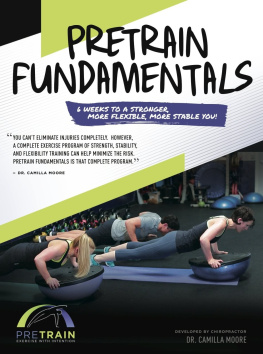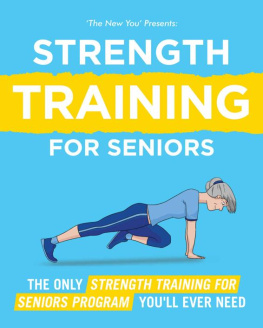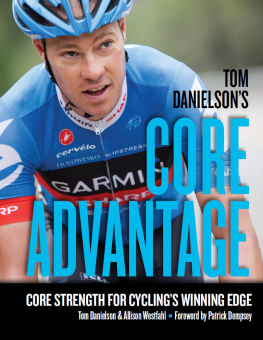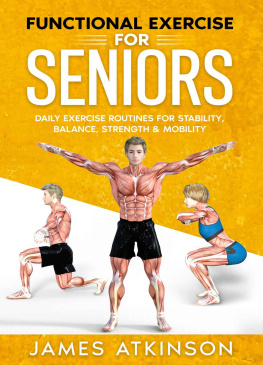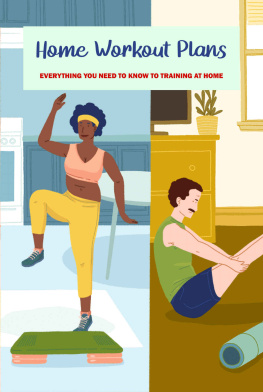Building a Sustainable Body
Feed the soil and let the soil feed the plant.
PreTrain is rooted in a holistic approach
I was raised in rural Maine on vegetables grown in our garden, grass fed beef pastured in our fields, and honey spun from Dads beehives. Organic was not a label, it was a way of life. As it turns out, we were cool and hip before catchphrases like Organic or Farm to Table became cool and hip. We had fulfillment in three main aspects of our life: physical health, spiritual health, and emotional health. My dad loved his organic gardens and lived by the sustainability motto, Feed the soil and let the soil feed the plant. I have found success by applying those early balance lessons to every aspect of my life, including patient care.
When I began my chiropractic practice in 2008 I decided to specialize in athletic injuries, specifically overuse injuries to the low back, hip, shoulder, knee and ankle. I have found no shortage of patients. These injuries were not difficult to treat if the evaluation was thorough and the treatment was appropriate for the diagnosis. However, I would see patients in my office with the same injury time and time again. How could this be? Hadnt we fixed this the first time? It became obvious that the treatment, though appropriate and effective, was not enough. The treatment alone was not sustainable.
After working with several offices in Southern New England, I opened my own practice in Bristol, RI within a well-utilized fitness facility. Many of my new patients were gym members and, with their permission, I began collaborating with their personal trainers throughout their treatment plans for a comprehensive approach. I also adapted my evaluations to include an assessment of three key areas of the patients general fitness: flexibility, stability, and strength.
Flexibility: We addressed flexibility issues of the joints and muscles, mobilizing tightened, overworked, and injured muscles.
Stability: We provided targeted, rehabilitative exercises to stabilize and reset the affected areas.
Strength: We created specific strengthening programs to encourage balanced and coordinated muscle development.
The results were dynamic.
We were resolving injuries in half the time and patients were lifting heavier weights, running faster, and training longer. Most importantly, however, the combination of flexibility, stability, and strength training was providing a long-term solution for injuries that had often plagued patients for years. The exercises prescribed initially served to target specific areas based on my evaluation of their condition. We mobilized what was restricted, stabilized what was unstable, and strengthened what was weak. It took daily attention and work, but after a few weeks, these exercises served to complement their existing exercise program rather than define or replace them. The rehabilitative exercises initially taught then served as maintenance exercises that could be performed on a regular but infrequent basis to prevent their injuries from returning or recurring. By focusing on those three functional pillars of fitness, we had developed a more sustainable model of fitness for everyday athletes.
Another change I made to my Bristol practice model was to increase the amount of treatment time for each visit. Having my own practice gave me the welcome opportunity to simplify, lowering the high patient volume required at other clinics and lengthening treatment sessions. I could spend more time evaluating and treating, and less time controlling the chaos of high volume. The result was more effective treatment and, most importantly, the opportunity to have truly open and honest conversations with patients. And as my patients spoke, I listened.
Patient dynamics led the way
Most patients came to me with the typical repetitive use injuries. They ranged from elite athletes to those with injuries from lifes daily athletics and everyone in between. Hip pain, low back pain, shoulder pain, knee and ankle injuries were most common, and the standard approach was to recommend a core exercise program. The problem was that everyone was offering core exercises, which had become a staple in workout programs from boot camps to the self-created exercise programs. But not all core programs are created equal.
A strong and stable core is unquestionably important to overall wellness and fitness, but a fundamental question remained: If everyone was doing core exercises, why were they still getting overuse injuries that had overt core weakness as a key component? Why, in functional tests performed during my examination, were they unable to stabilize their pelvis and low back with even the slightest amount of stress? Why were these core exercises ineffective?
It was clear that a lack of effort was not the culprit: these patients were working their core in a dozen different ways on a dozen different days. Something was obviously missing from their exercise and training routines. I began digging deeper into their medical history, specifically their history of injuries and past trauma, searching for the answer that I eventually uncovered.
Many of my patients had been active on some level, at some point, for most of their life. Although they were aware of the obvious changes that accompany time and age, such as changes in their posture and the presence of new aches and pains, patients were unaware of how these changes affected the way they moved on a day to day basis. They didnt realize their overuse injuries today were a direct result of physical changes from their past. Those old injuries had resulted in compensations and adaptations that made it difficult to actually activate the deep muscles of the core. Patients were physically able to perform the exercises; however, they were simply using their bigger muscles to move rather than using the deep core muscles underneath. Compensating in this way led to improper movement which is why PreTrain focuses on building a foundation of proper movement on three pillars: Stability, Flexibility, and Strength.

